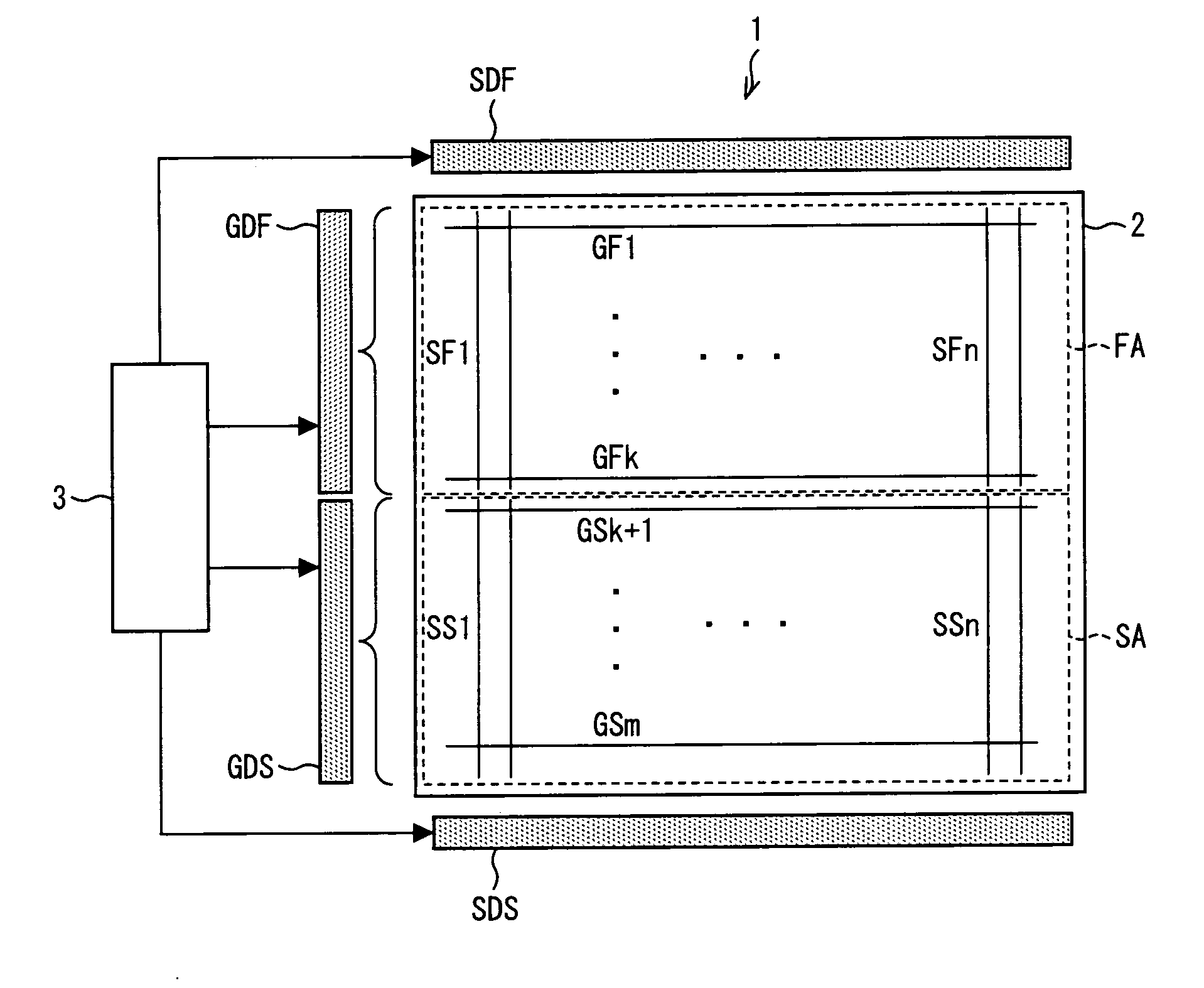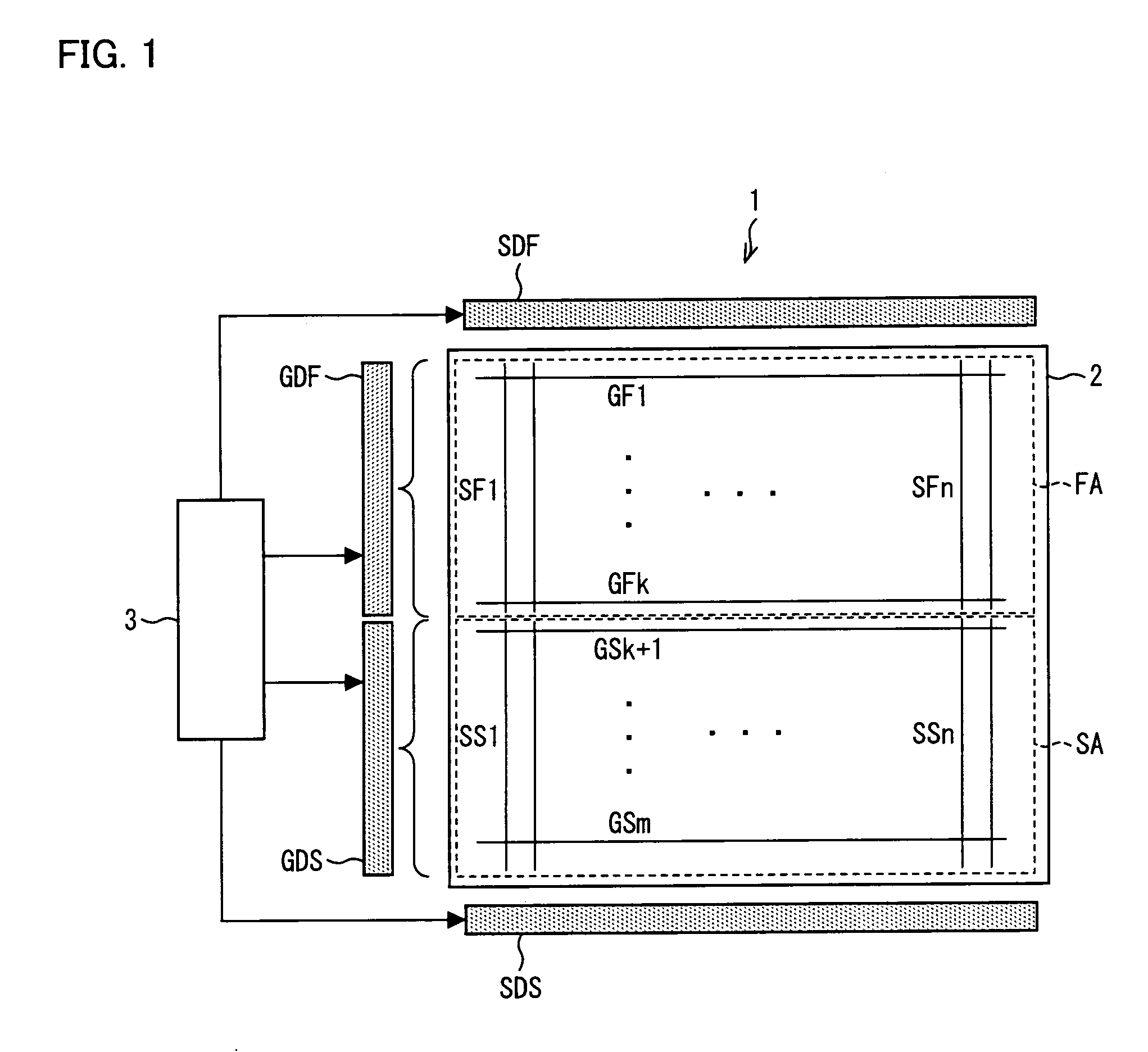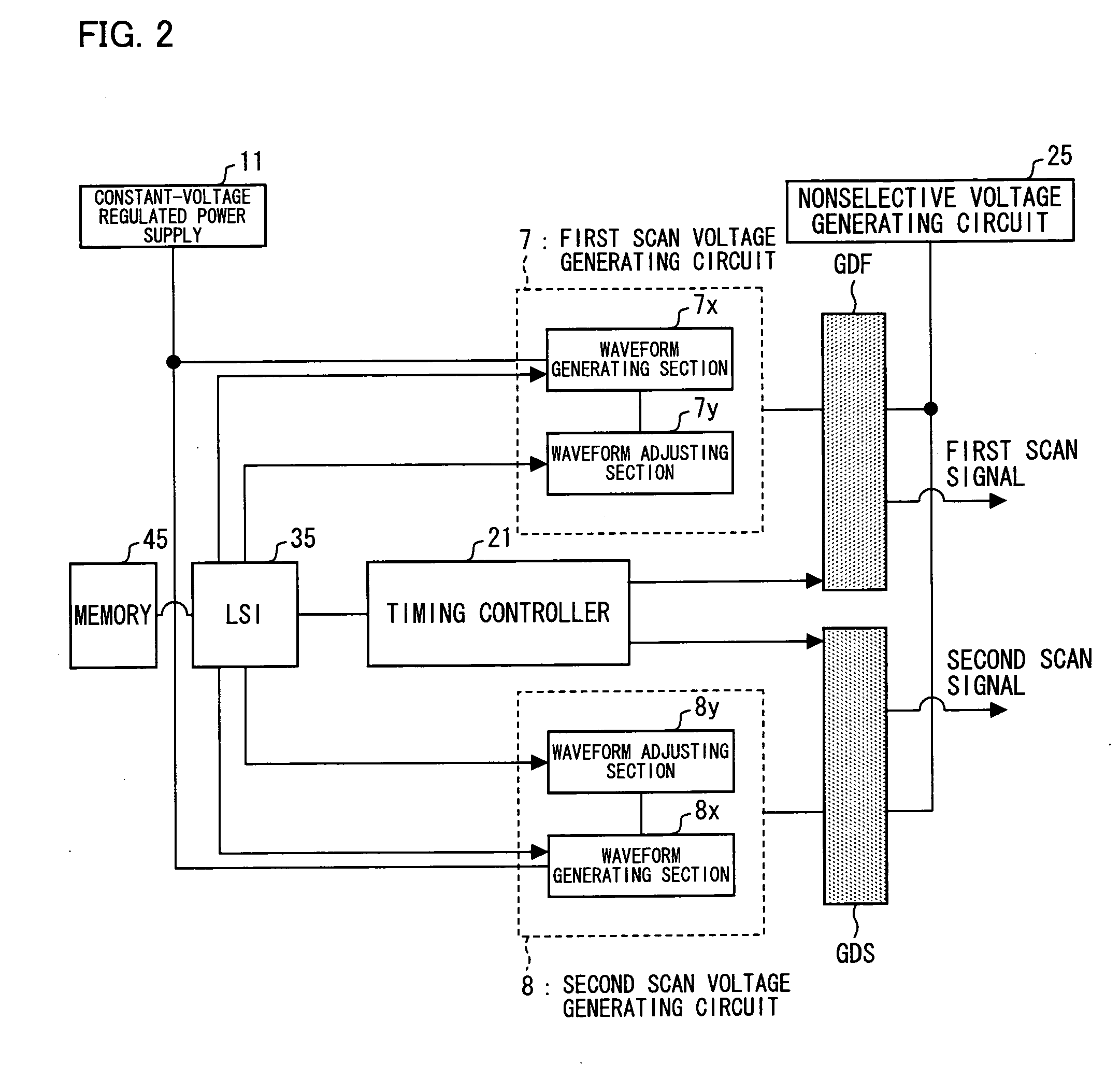Display device, control device of display device, driving method of display divice, liquid crystal display device, and television receiver
- Summary
- Abstract
- Description
- Claims
- Application Information
AI Technical Summary
Benefits of technology
Problems solved by technology
Method used
Image
Examples
embodiment 1
[0093]FIG. 2 is a block diagram illustrating a part of the driver control circuit 3 shown in FIG. 1 and the first and second gate drivers GDF and GDS. As shown in FIG. 2, the driver control circuit 3 includes: a constant-voltage regulated power supply 11; a nonselective voltage generating circuit 25; a memory 45; an LSI 35 (a waveform adjusting section controlling circuit); a timing controller 21; a first scan voltage generating circuit 7; and a second scan voltage generating circuit 8. Note that the first scan voltage generating circuit 7 includes a waveform generating section 7x and a waveform adjusting section 7y, and the second scan voltage generating circuit 8 includes a waveform generating section 8x and a waveform adjusting section 8y.
[0094]The first scan voltage generating circuit 7 converts a constant voltage supplied from the constant-voltage regulated power supply 11 so that the converted voltage corresponds to the first region FA, and outputs to the first gate driver GD...
embodiment 2
[0108]FIG. 9 is a block diagram illustrating a part of the driver control circuit 3 and first and second gate drivers GDF and GDS shown in FIG. 1. As shown in FIG. 9, the driver control circuit 3 includes: a constant-voltage regulated power supply 11; a nonselective voltage generating circuit 25; a memory 45; an LSI 35; a timing controller 21; a first scan voltage generating circuit 7; and a second scan voltage generating circuit 8. Note that the first scan voltage generating circuit 7 includes a waveform generating section 7x and a waveform adjusting section 7y, and the second scan voltage generating circuit 8 includes a waveform generating section 8x and a waveform adjusting section 8y.
[0109]The first scan voltage generating circuit 7 converts a constant voltage supplied from the constant-voltage regulated power supply 11 so that the converted voltage corresponds to the first region FA, and outputs to the first gate driver GDF, as a first scan voltage, the converted voltage. More...
embodiment 3
[0124]In the present embodiment, as shown in FIG. 17, (i) a subsequent stage circuit 10 shown in FIG. 10 is provided so as to follow the waveform generating section 7x shown in FIG. 11 and a subsequent stage circuit 10 shown in FIG. 10 is provided so as to follow the waveform generating section 8x shown in FIG. 11. That is, the subsequent stage circuit 10 is provided between the first gate driver GDF and an emitter terminal of the transistor Tr3, and the another subsequent stage circuit 10 is provided between the second gate driver GDS and an emitter terminal of the transistor Tr3. Note that each of the subsequent stage circuits 10 includes: a transistor Tr11 which is an NPN bipolar transistor; resistors R11 and R12; a diode d; and a transistor Tr12 which is an N-channel FET. The transistor Tr12 has a source terminal which is grounded. The resistor R11 is provided between a collector terminal of the transistor Tr11 and a base terminal of the transistor Tr11. The diode d has (i) an a...
PUM
 Login to View More
Login to View More Abstract
Description
Claims
Application Information
 Login to View More
Login to View More - R&D
- Intellectual Property
- Life Sciences
- Materials
- Tech Scout
- Unparalleled Data Quality
- Higher Quality Content
- 60% Fewer Hallucinations
Browse by: Latest US Patents, China's latest patents, Technical Efficacy Thesaurus, Application Domain, Technology Topic, Popular Technical Reports.
© 2025 PatSnap. All rights reserved.Legal|Privacy policy|Modern Slavery Act Transparency Statement|Sitemap|About US| Contact US: help@patsnap.com



